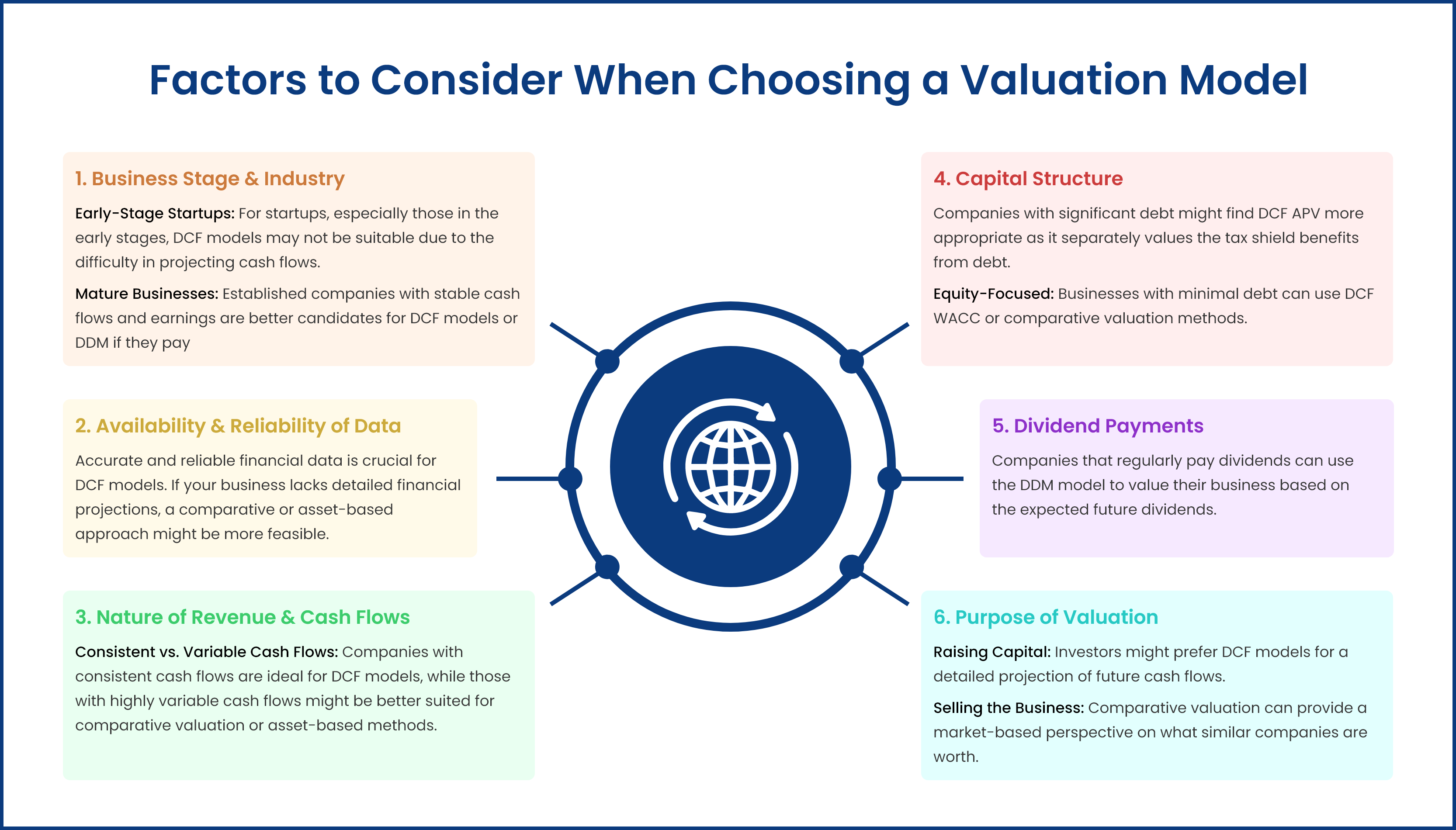Valuation
How to Choose the Right Valuation Model for Your Business

Valuing your business accurately is essential for various purposes, including raising capital, selling your business, or making strategic decisions. With numerous valuation models available, choosing the right one can be daunting. Each model has its strengths and weaknesses, and the best choice depends on your business type, industry, and specific circumstances. This blog will guide you through the key factors to consider when selecting the most suitable valuation model for your business.
Understanding Different Valuation Models
Before diving into the selection process, it’s crucial to understand the common valuation models available:
1. Discounted Cash Flow (DCF) Models: These models, including DCF WACC (Weighted Average Cost of Capital) and DCF APV (Adjusted Present Value), estimate a company’s value based on its future cash flows, discounted back to their present value.
2. Dividend Discount Model (DDM): This model values a company based on the present value of its expected future dividends, making it suitable for companies that consistently pay dividends.
3. Comparative Valuation (Multiples): This method values a company by comparing it to similar businesses in the industry, using metrics like P/E (Price-to-Earnings) ratios, EBITDA multiples, or revenue multiples.
4. Asset-Based Valuation: This approach values a business based on the value of its assets minus its liabilities, often used for companies with substantial tangible assets.
5. Market Capitalization: This simple method calculates a company’s value by multiplying its stock price by its total outstanding shares, applicable to publicly traded companies.
6. Earnings Power Value (EPV): This model values a business based on its current earnings, adjusted for the sustainability and growth potential of those earnings.

Practical Steps to Choose the Right Valuation Model
1. Assess Your Business Characteristics Evaluate your business stage, industry, and the nature of your revenue and cash flows. Determine the availability and reliability of your financial data.
2. Define Your Valuation Purpose Clarify why you need the valuation and who will use it (e.g., investors, potential buyers, internal stakeholders).
3. Select Appropriate Models Choose one or more valuation models that align with your business characteristics and valuation purpose. For a comprehensive view, consider using multiple models and comparing the results.
4. Use Tools and Resources Utilize valuation tools like StartupVal to automate and simplify the valuation process. StartupVal supports various models, ensuring you get accurate and reliable valuations tailored to your business needs.
Conclusion
Choosing the right valuation model for your business is a crucial decision that depends on various factors, including your business stage, industry, financial data availability, and valuation purpose. By understanding these factors and selecting the appropriate models, you can ensure accurate and meaningful valuations. Tools like StartupVal can help automate this process, making it easier for you to focus on strategic decisions and business growth. Let StartupVal handle the complexities of valuation so you can confidently navigate your business journey.
Written by
Amit Siddharth